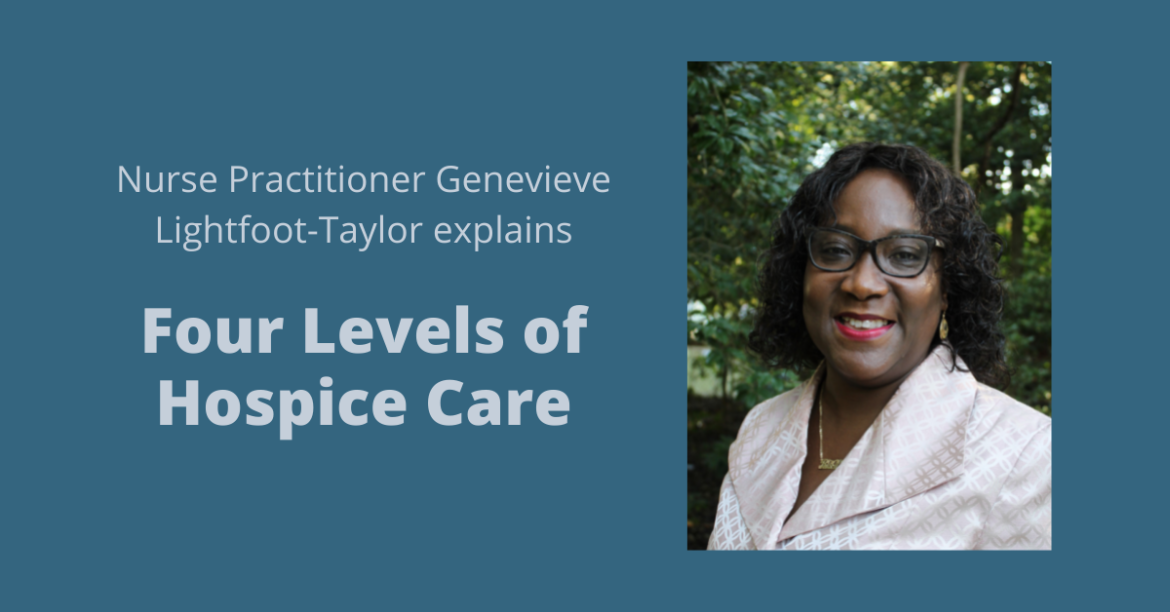 One of the biggest misconceptions about hospice care is that it is a place. For the most part, people do not “go to” hospice. Rather hospice goes to people. Hospice care treats the individual rather than the disease and honors the patient’s needs with medical, emotional, and spiritual support at their end of life.
One of the biggest misconceptions about hospice care is that it is a place. For the most part, people do not “go to” hospice. Rather hospice goes to people. Hospice care treats the individual rather than the disease and honors the patient’s needs with medical, emotional, and spiritual support at their end of life.
There are four different levels of hospice care as defined by the Centers for Medicare and Medicaid Services. One patient could experience all four levels. Another may experience just one level of care as they reach their end of life.
The first level of care is the hospice care. This is where an individual receives hospice care where they live. This can be a private residence, a senior or assisted living facility or a nursing facility.
The second level of hospice care is general inpatient care, which is provided for pain control or other acute symptom management that cannot controlled in any other setting. It begins when other efforts to manage symptoms have been ineffective. These symptoms can include, but are not limited to, difficulty breathing, pain, anxiety, nausea, vomiting, or complex wound care. General inpatient care can be provided in a Medicare-certified hospital, hospice in-patient facility or nursing facility that has a registered nurse available 24 hours a day to provide direct patient care.
The third level of hospice care is continuous home care. This is provided for between 8 and 24 hours a day to keep the patient in their home while the hospice team manages pain and other acute medical symptoms. Continuous home care must be predominantly nursing care, supplemented with caregiver and hospice services.
People do not “go to” hospice. Rather hospice goes to people.
Caring for a loved one can be very difficult. So, the fourth level of hospice care, respite care, is available to caregivers who really need a break from all the caregiving they have been giving. This provides temporary relief to the patient’s primary caregiver. Respite care can be provided for up to five consecutive days in a hospital, hospice facility or a long-term care facility that offers 24-hour nursing personnel present on all shifts to ensure the patient’s needs are met.
No matter what level of care, the decision to enroll in hospice can be changed at any time if the person’s illness improves or if the person chooses to resume curative treatment. It is not giving up on life. It is choosing to live life to the fullest extent possible.


